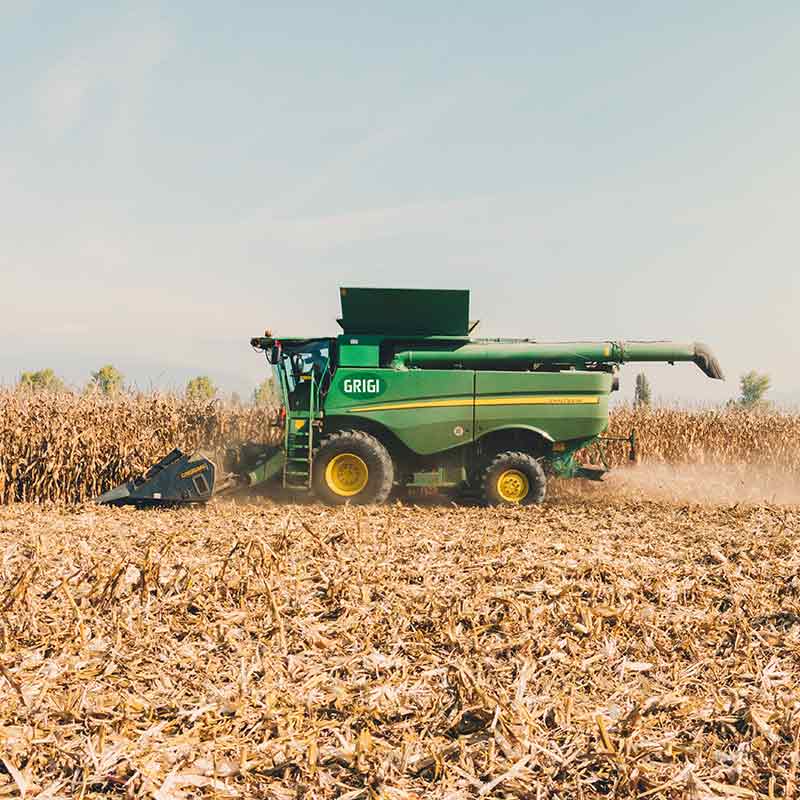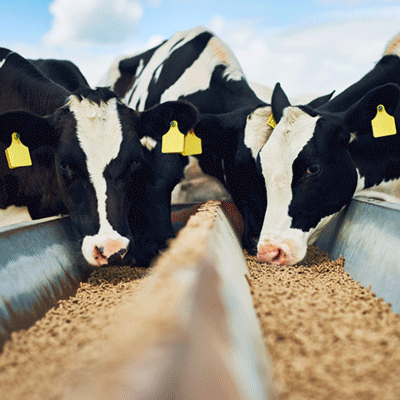Sustainable agriculture 101: get informed - strategies & resources
Strategies for sustainable agriculture
In working with companies along the consumer product supply chain, EDF has discovered the following solutions to help agricultural supply chains become more sustainable. In order to implement these strategies, companies must find opportunities for improvement both internally and externally. Many sustainable agriculture solutions require engaging along the supply chain. Find opportunities available for you in animal agriculture, crop production, product design, packaging, measuring and reporting, key stakeholders and the policy environment here.
Crop production
Producing crops is critical to sustaining a society. Row crops, like corn, wheat and soy, feed humans and animals, and can be turned into a variety of inputs to many of the foods we find on the shelves at our grocery stores. Specialty crops, like vegetables, fruits and tree nuts also find their way to our markets. Regardless of the food you are selling or your place in the supply chain, it is likely that it started with initial crop ingredients.
Nitrogen fertilizer
Nitrogen fertilizer is a farmer’s most expensive input. But in any given year, less than half of fertilizer is actually absorbed by the plants; that’s money lost for farmers operating on razor-thin margins. But fertilizer loss is also costly for the environment: it emits a greenhouse gas 300 times more powerful than CO2, and runs off into the local streams and rivers as pollution. One key solution is to improve the way fertilizer is applied to crops. The goal is to engage and enable farmers to use just the right amount of fertilizer on their crops, so they’ll get higher yields, spend less money and not have any excess escaping into our air, land and water.
Precision agriculture
Using an approach called precision agriculture to analyze data gathered from sensors, tractors and satellites allow today’s farmers to better track crop health, make planting decisions and guide fertilizer use to improve the efficiency of their businesses. It’s been helpful in tackling fertilizer loss, which can help save farmers money.
Discuss with your team and supply chain partners what type of incentives are appealing, motivating, and meaningful. Develop a strategy to deploy such incentives, whether monetary, service-based, technology based, financial support/investment, or otherwise, that reinforce the practices and outcomes that you want to see.
N balance
If you’ve decided that you want to quantify environmental impacts and benefits from agriculture, consider using the concept of N balance, which can help farmers learn more about their nitrogen losses and help companies know more about environmental progress in their supply chains. This metric provides a robust measure of how nitrogen is lost to air and water, or fertilizer pollution, which is exactly what we’ve been trying to tackle with our supply chain partners.

Animal agriculture
Raising animals for food has both positive and negative impacts on the environment. We want supply chains to minimize the negative impacts and reinforce the positive role of animal agriculture.
Animal feed
If you’re concerned about the environmental impact of animal feed (keep in mind that around 40% of all of the corn produced in the US goes to feed animals) then, you’ll want to determine where you can have the most influence. Determine if you have access to farmers or industry groups like the National Corn Growers Association through meetings like Commodity Classic, the Sustainable Ag Summit, or through work with a group like the Midwest Row Crop Collaborative, to assess challenges within your supply chain to producing corn. Use the strategies outlined above for crop production and learn more about what our partners Smithfield and Tyson have done.
Manure
What goes in must come out. Manure from livestock is a fantastic source of nutrients that can be reapplied to agricultural lands. However, understanding the nutrient content and being able to apply manure precisely is a challenge for many producers. Some producers are turning to managing manure as an energy source and creating biogas. While the technology is burgeoning in the U.S. and does not apply to all animals or geographies, digesters have the potential to capture methane greenhouse gases normally released into the air and lessen the chance of nutrients like phosphorus leaching into water. The EPA explains more here.
Enteric methane
Ruminant animals like cows and sheep produce enteric methane, which also contribute to a third of all the U.S. emissions from agriculture. Currently, researchers are looking at food additives, from oregano to seaweed, and at management techniques that will reduce the amount of methane released this way. Investigate partnering with universities, industry groups and other companies interested in this challenge and see if there are ways for your organization to contribute to the research.
Water management
A variety of technologies and management techniques exist to manage water with animal production operations. It’s critical to have an understanding of all of the uses of water within your supply chain, for food safety, cleaning and keeping animals hydrated or temperature controlled. Work with supply chain partners to conduct an assessment of major water uses and determine if there are best practices to implement to make use more efficient.
Pasture management
For animals that graze, begin by identifying which techniques your supply chain is using to manage pasturelands. Build relationships with ranchers and farmers to understand their grazing management plans that can help animals thrive while also benefiting local agroecosystems.

Measuring & reporting
New technologies and methodologies are making data collection, analysis and sharing simpler, faster and more effective. This provides key information back to farmers and to stakeholders throughout the supply chain. Measuring and reporting should help your supply chain partners, like farmers, tell their story better to consumers, who are asking for more information about how their food is produced.
Stakeholder engagement
Understanding the motivations of different groups involved in your supply chain is a challenge, but can go a long way when showing how your sustainable agriculture goals are relevant and beneficial to them!
Farmer advisors.
Farmer advisors are key messengers, so we’ve developed programs like SPARC with Field to Market to reach ag retailers and crop consultants.
Stakeholder mapping.
Find out the ways that your supply chain partners collect information and make decisions. Use the guidance throughout Supply Chain Solutions Center and in Build a sustainability plan 101 for stakeholder mapping.
Policy
In the absence of strong federal action, there’s an opportunity for states and municipalities to lead by incentivizing conservation agriculture. Many farm and industry groups are speaking publicly on ways policy can improve farm profitability and resilience.
Increased profitability.
Farmers engaging from a perspective of Climate Smart Agriculture want to work on climate to make their farms more profitable and more resilient. Introduce your government affairs team to the issues and opportunities in agriculture.
Increased resilience.
The Sustainable Food Policy Alliance is a new group of food companies trying to demonstrate that there are positive ways for companies to engage to support on-the-ground practices that increase the resilience of their supply chains through policy. Track their actions and see if there are ways for your company to engage.

Talking the talk: a glossary of sustainable agriculture
If you’re new to the agriculture sustainability space, you’re likely to encounter a lot of new terms (and even some jargon). This resource from the USDA can help you get up to speed.